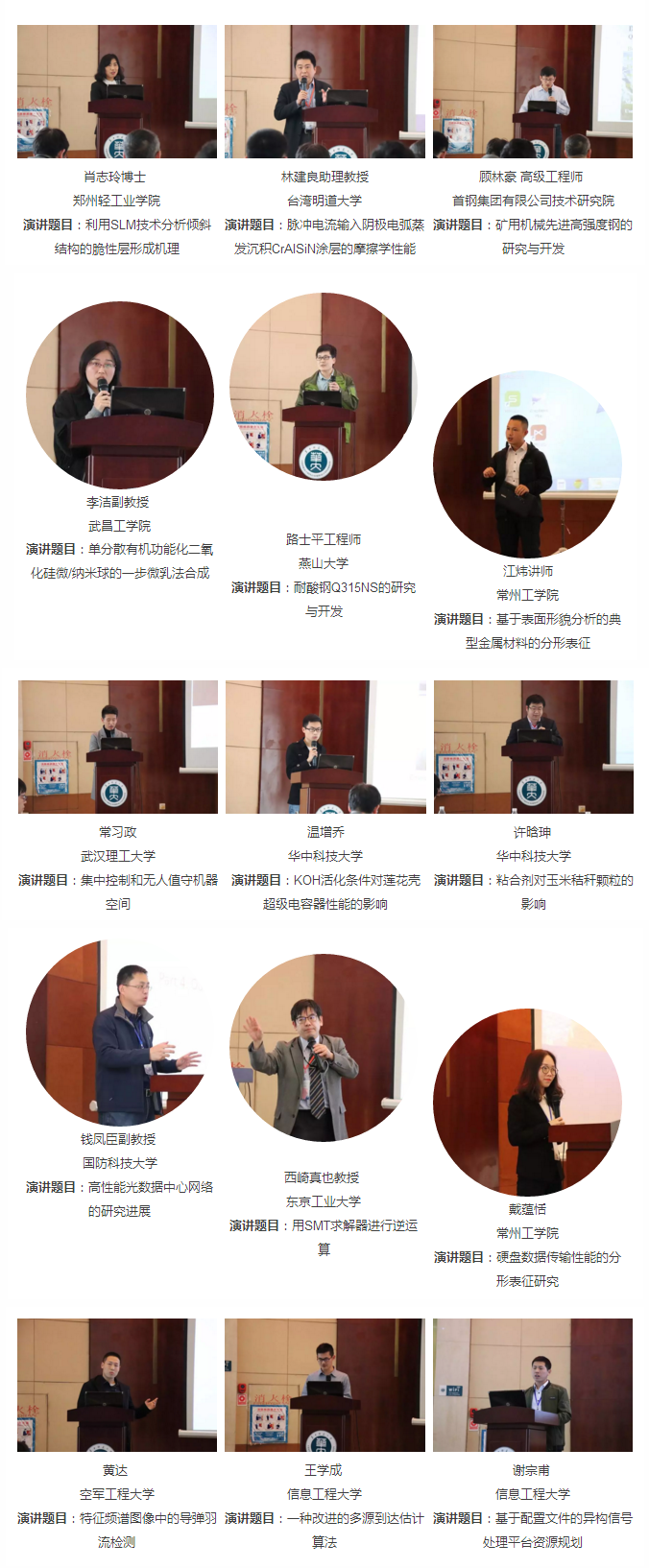| 2018 2nd International Conference on Intelligent Computing and Signal Processing (ICSP 2018) |
2018 2nd International Conference on Intelligent Computing and Signal Processing (ICSP 2018) has been held successfully from March 23-25, 2018 on Wuhan, China. There were about 50 delegates from each city that attended the conference, several experts in related fields were invited to give keynote speeches. The in-depth discussions among the attendees effectively advanced the academic exchange.
*ICSP 2018:EI Compendex Indexing | Conference proceedings in MATEC
| Group Photo |
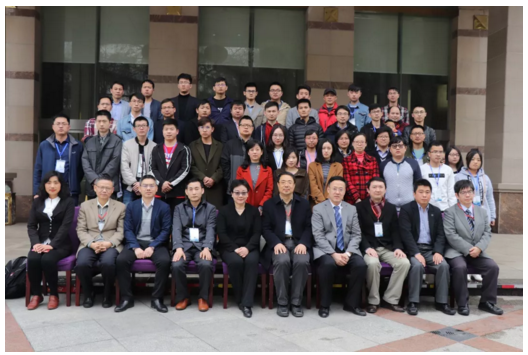
| Keynote Speakers |

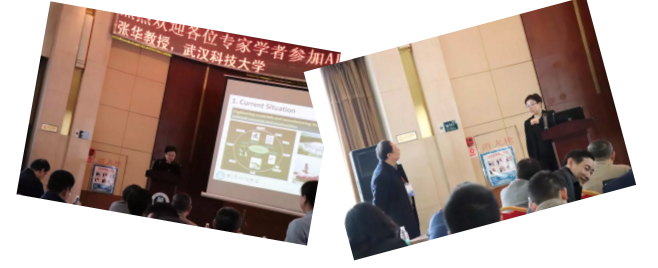
Prof. Hua Zhang, Wuhan University of Science and Technology, China
Title: Multi-source and dynamic energy model for mechanical manufacturing system and its energy efficiency optimization
Speech Abstract:
Due to complex multi-source and dynamic energy characteristic, the energy model and efficiency optimization of mechanical manufacturing system have become a hotspot and difficult problem in Green Manufacturing (GM) at the present. This research was focus on the energy characteristic of energy sources, the energy consumption of the energy sources’ working state and their working flows were studied to describe the energy characteristic of the mechanical manufacturing system. Then, an energy model was established by using the business process model and notation (BPMN) method, and the simulation analysis was also studied with the discrete event system specification (DEVS). Then, an energy efficiency optimization method for different levels of the mechanical manufacturing system was proposed. Finally, the application of the above method and model was studied.

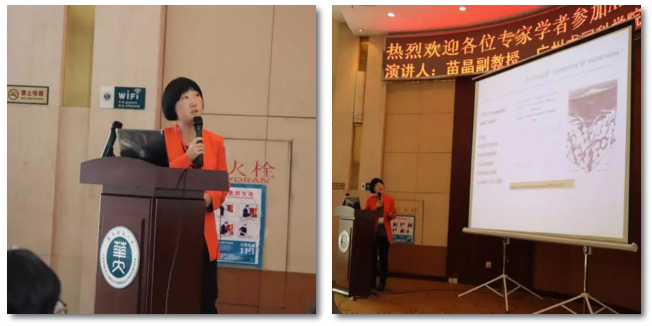
A. Prof. Jing Miao, Guangzhou Institute of Advanced Technologies, Chinese Academy of Sciences, China
Title: The composite nanofiltration membranes with negative and positive charges based on poly (vinyl alcohol)
Speech Abstract:
Current and future desalination applications desire low operation pressures, high permeate flux, and high salt rejection membranes. The separation properties of reverse osmosis (RO)/nanofiltration (NF) membranes are determined by the co-effect of the Donnan effect, the sieving effect, and the mass transport. To obtain the high rejection and the high permeate flux RO/NF membranes, the poly (vinyl alcohol) (PVA) membranes should be charged, which could be achieved through the method of blending PVA with polyelectrolyte or introducing the charged groups on the PVA molecular chains. In the following two parts of this work, two novel kinds of PVA composite NF membranes, negatively and positively charged, were fabricated through interfacial polymerization and coating and crosslinking, respectively. The active layer material of the positively charged NF membrane is quaternized PVA(q-PVA), while that of the negatively charged NF membrane is PVA blended with carboxymethyl cellulose sodium (CMC-Na) . The rejection of q-PVA composite NF membrane for both inorganic electrolytes of MgCl2 and Na2SO4 increased with increasing quaternization degree (QD), i.e., the increase in the positive charged groups of the active layer. The q-PVA membrane showed 89.2% of rejection and 10.3 kg· m-2· h-1 of permeate flux to 5 mM MgCl2 solution. The rejection of PVA/CMC-Na blend membranes to inorganic electrolytes were as follows: Na2SO4 (93.7%), NaCl (32.6%), MgSO4 (24.5%), and MgCl2 (8.6%). The permeate flux and the rejection to 5 mM Na2SO4 solution at 0.8 MPa and ambient temperature were 24.8 kg·m-2·h-1 and 93.7%, respectively. The resultant composite NF membrane showed good long-term stability.
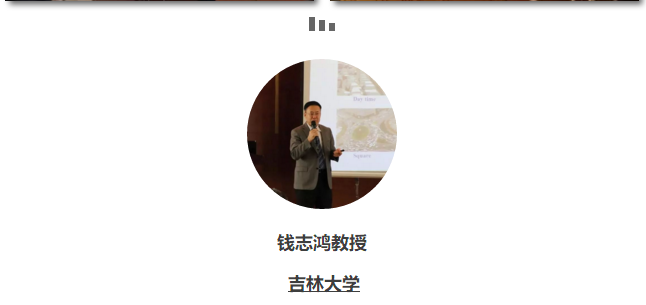
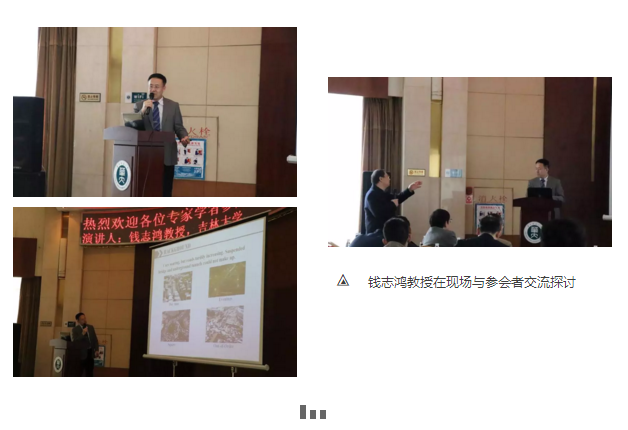
Prof. Zhihong Qian, Jilin University, China
Title: The Challenges for the Intelligent Transportation Systems
Speech Abstract:
Seamless transportation is one of the pillars of our societal and economical sustainability. Intelligent Transportation Systems (ITS) offer potential solutions to growing congestion problems in major urban areas. This lecture focuses on the challenges for the Intelligent Transportation Systems. Gathering information practice was dominated by the use of point detectors for surveillance, and wire-line communication networks for data and information transmission. Reliance on point detectors, although dominant at the moment, is losing appeal due to detector reliability issues and the cost of building and maintaining the detector network, not to mention major traffic stream disruptions during construction and maintenance. Wireless networks might be better alternative to carry out the tasks, and massive connection to communication networks is one of the highlights of the communication systems, which obviously encounter some challenges. On the basis of exploring the leading role of those communication systems to developing trend of communication technologies in the future, such as the 5th Generation Communication Systems (5G), short range communications, and device-to-device (D2D) communications, some issues in terms of the communication system design are illustrated, like device discovery, resource allocation, and caching technology.

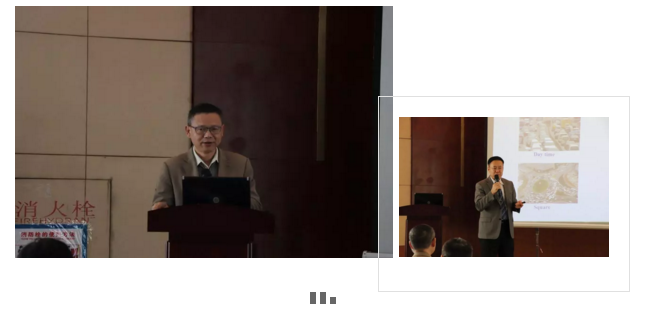
Prof. Guoan Zhang, Fujian University of Technology, China
Title: Intelligent Computing in the Manipulation of a Smart Car
Speech Abstract:
In this report, a design scheme of intelligent car based on Android mobile phone navigation is presented. With the help of a driving control system, the car can be manipulated by a smart cellphone. A video subsystem on the car can send real-time images from the car to cellphone. Also an obstacle avoidance algorithm of ranging subsystem on the car can keep the intelligent car away from visible obstacles. The above functions have been realized through our intelligent car control system.

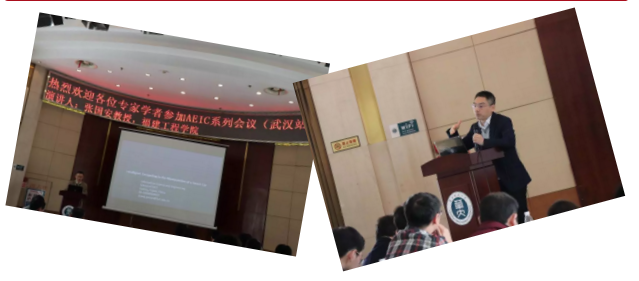
A. Prof. Shengjun Zhou, Wuhan University, China
Title: High brightness GaN-based light-emitting diodes
Speech Abstract:
GaN-based LEDs have been considered as a candidate of next generation solid-state light sources for replacement of general lighting sources such as florescent lamps due to their environmentally friendly properties and long lifetime (~40,000 hrs). The light extraction efficiency is relatively low due to total internal reflection (TIR) of the generated light at the nitride-air interface resulting from their very different refractive indices. Our group employ various light extraction methods, including surface texturing, patterned ITO, current blocking layer, patterned sapphire substrate, wavy sidewalls, embedded air void microstructure, distributed Bragg reflector (DBR), micro/nano polymer grating, laser stealth dicing, and nanoscale Ni/Au wire gird, to improve light extraction efficiency of LEDs. We also develop two types of GaN-based flip-chip LEDs with highly reflective Ag/TiW and indium-tin oxide (ITO)/DBR p-type ohmic contacts. We show that a direct ohmic contact to p-GaN layer using pure Ag is obtained when annealed at 600°C in N2 ambient. Our demonstration of highly reflective pure Ag ohmic contact with superior current spreading paves the way for the realization of highly efficient ultra-high power flip-chip LEDs.

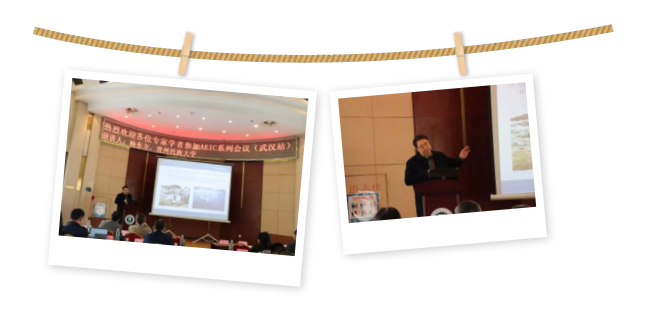
Prof. Dongfang Yang, Guizhou Minzu University, China
Title: The homogeneity changing process of Cu in Jiaozhou bay waters
Speech Abstract:
Using investigation data on cuprum (Cu) in April, July and October 1985, this paper researched the horizontal distributions of Cu in Jiaozhou Bay. Results showed that there were two major Cu sources, i.e., river flow and marine current, and the waters in Jiaozhou Bay could be divided into two classes. On one hand, in case of there was Cu input, Cu contents in waters was non-homogeneous. On the other hand, in case of there was little input, Cu contents in waters was homogeneous. Along with time, Cu contents in waters were undergoing process from non-homogeneous to homogeneous. This revealed that ocean has feature of homogeneous by means of tide and current. Ocean makes all of the substances in waters to be homogeneous, and make all of the substances in waters to diffuse in tends of homogeneous.
| Oral Speakers |
